Subscribe now and get the latest podcast releases delivered straight to your inbox.
How To Manage a Videographer — If You Don't Have Video Experience

Oct 26, 2023

So your company has decided to invest in video to take your marketing and sales to the next level.
You made this decision because, as a leader in your company, you know that video is the medium in demand right now, and that's only going to increase; 54% of consumers want to see video content from a brand they support, and next year (2024), it’s expected that more than 80% of internet traffic will come from video streaming and downloads.
You want to hire a videographer, but you’ve never managed one before. If you fail to manage this person correctly, then that could mean failure of your entire video initiative.
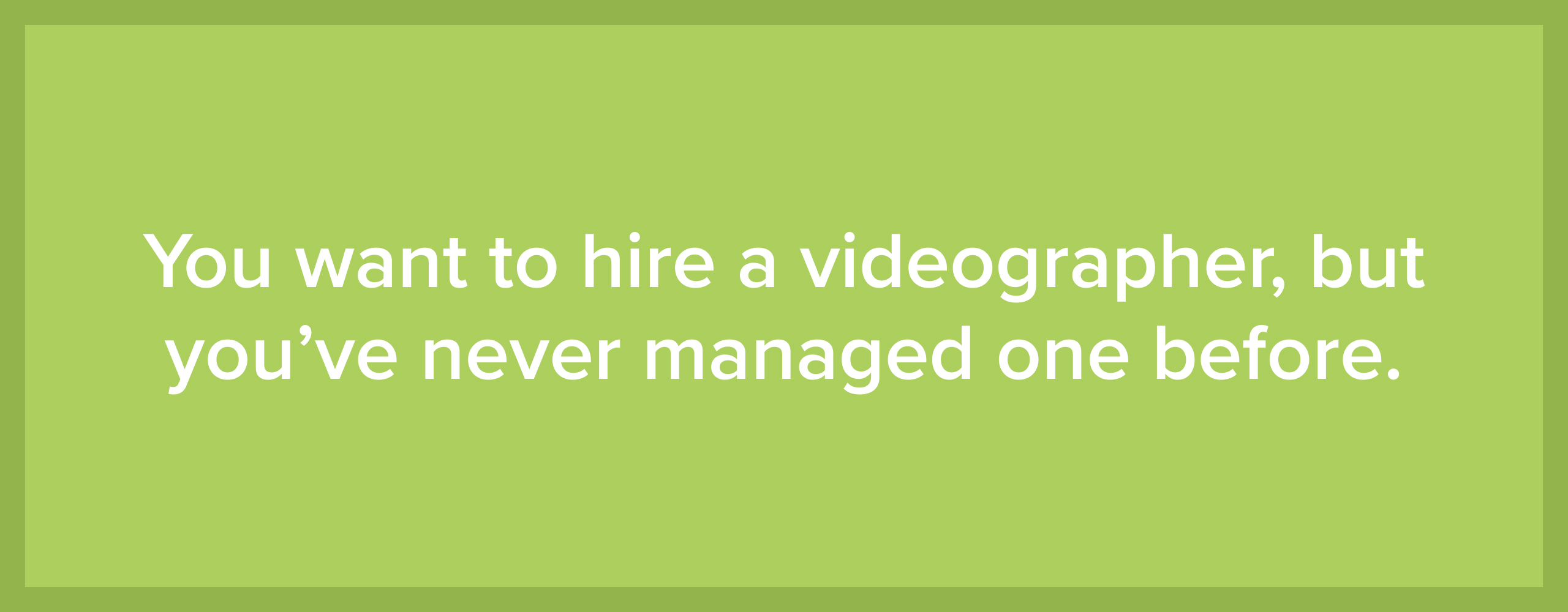
I’ve helped countless companies all over the world hire, train, and succeed in implementing a successful video strategy in their company. These teams, on the journey of mastering They Ask, You Answer, have similar concerns.
Below, I’m going to tackle all of your questions by breaking down:
- What makes managing a videographer different
- How to evaluate your videographer’s performance
- How to manage your videographer to ensure success
I promise that by the end of this article, you’ll feel confident in managing this new team member and know how to set them up for success at your company.
What makes managing a videographer different than other positions?
In the past, most companies outsourced video production, but that led to high costs, low output, and generic content.
Outsourced video production leads to
- High costs
- Low output
- Generic content
An in-house videographer is the key to consistency, both in output and style.
The challenge in managing a videographer is balancing the demand for video with realistic expectations for how much they can produce.
The consequences of poor management can be missed deadlines and diminished video quality, or worse, the loss of faith in video overall in your company.

It could even mean the loss of confidence in you as a manager to lead a successful team. So, clearly, if you’ve never managed a videographer before, the stakes are high.
As a manager of an in-house videographer, you’ll be evaluating their practical skills (making the actual videos), as well as their ability to receive feedback, project manage, and contribute as a thought leader and teacher to the rest of your company.
Evaluating video marketing quality
One of your most important duties as a manager is reviewing the content the videographer makes. You may not be the only person reviewing the video content, but even if others in your company review videos as well, you’re likely to be the person — or one of the people — who will be giving final approval on the video content before it gets published.
Knowing that’s part of your responsibilities, You may be thinking: Am I qualified to review videos? How do I even know if a video is “good”?
Well, do you have a favorite movie or TV show you watch? What do you like about it? What about the storytelling compels you? How do you feel about the characters? What makes you feel that way?
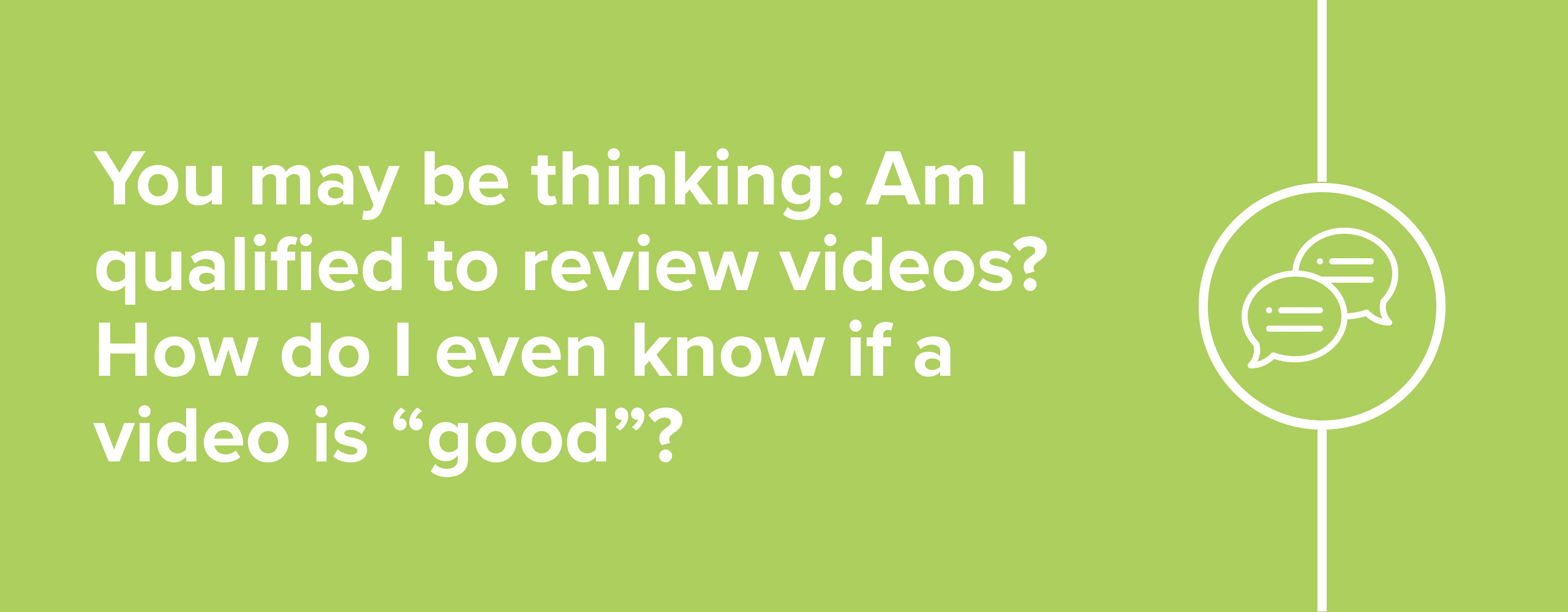
Also, think of movies and shows you don’t like and the reasons you don’t like them.
This gives you a great starting point for reviewing video content, but of course, there are some nuances when it comes to evaluating videos for sales and marketing.
Let’s break this down into two main areas of consideration: content and production
Content
When it comes to storytelling in a TV show or movie, it’s a clever device to leave a cliffhanger at the end to keep the audience coming back for more. In sales and marketing, it’s the exact opposite.
A great sales and marketing video should clearly lay out the question being asked by the customer and be up-front about how to solve that problem, leaving no additional questions unanswered. In short, the big questions you should be asking yourself when you’re reviewing a marketing video your videographer submits are:
- Does this video address a clear question and offer a clear solution to a problem?
- Do I have any questions after watching this video?
- Is this video valuable to our audience?
Answering these questions will help you determine what may or may not be missing from the content of the video.
Production
From a production standpoint, your finished product should be clear, simple, and on-brand.
Too many moving parts in a video can be distracting for the audience and can take away from the goal, which is to better educate the customers in your industry. Typically, a one-camera shoot will get the job done, and simple graphics and b-roll (or secondary footage) can help better tell the story.
When you’re evaluating your videographer’s production on a high level, ask yourself:
- Does the video look good?
- Does the video sound good?
- Does this video look and feel sufficiently professional and on-brand for my business?
- Does this video match our company's personality?
Note: Some of the questions about content can also lend themselves to production changes. For example, if you do have questions unanswered after watching, perhaps adding some b-roll or information visually on-screen could help clarify.
With all this in mind…
Let’s do a practical exercise
Below, you’ll find a video created by an IMPACT client. Go ahead and open that video in a different tab and watch it.
As you do, use this Video Evaluation Checklist that I use with my clients. Once you’ve finished watching the video, come back to this article, and let’s compare notes on how we evaluate this video.
Before you click on it, keep in mind that this video is around six minutes long, so make sure you have adequate time to watch it and take notes.
Now that you’ve had time to watch this video, let’s break it down. Starting with the content evaluation. A reminder: We’re using the Video Evaluation Checklist. The checklist breaks down these basic categories of a video:
- Content evaluation
- Production evaluation
Let's look at both.
Video content evaluation
When we talk about video content evaluation, we’re referring to the story that the video tells.
The content is ultimately what will make or break whether or not our audience will relate to the video and make a decision on whether or not we’re a trustworthy resource for them.
While the content of your video is likely to be decided and strategized long before it’s made, this is when you ensure it comes out as expected. Use the following sections to help you judge whether the video’s content is good based on the evaluation checklist mentioned above.
Is it a sales video or a marketing video?
When would this video be used? Most likely, this would be a sales video for a potential customer is on the fence about buying leather furniture.
Is there a clear story?
For this phase of evaluating the video, we’re going to be looking at the actual content itself and analyzing that. You’ll notice on the checklist a mention of six elements that the most engaging and effective videos usually include. If you want more information about what those are, this video breaks it down for you:
To keep it simple for this evaluation, think of this question: did the video capture your attention? If you weren’t assigned to be watching this, would it still hold your attention?
My feedback
My feedback here would be to emphasize the stakes of not properly cleaning the leather furniture at the beginning of the video.
They do a good job of emphasizing this after the teaser, but I don’t feel compelled to stick around after the first 10 seconds of the video.
One way to keep their audience’s attention would be to portray the emotions experienced when you first see this furniture in your home and what goes through your mind at the first signs of damage. It could sound something like this:
“Imagine you just got new leather furniture, you’re so pleased with the way it looks in your home. But then, the inevitable first spill happens… What do you do? Your mind is racing and you’re asking yourself, how do I even clean this? Well, by the end of this video we promise you’ll have the knowledge you need to protect your furniture for the long haul.”
Then we dive into evaluating the segments. They do a good job of holding up examples of products and examples of fabrics and textures to help guide the person watching this video.
The one thing I’d like to see more of in this video is a dedicated segment on where someone could buy the products needed and how much someone could expect to spend on these products for leather care.
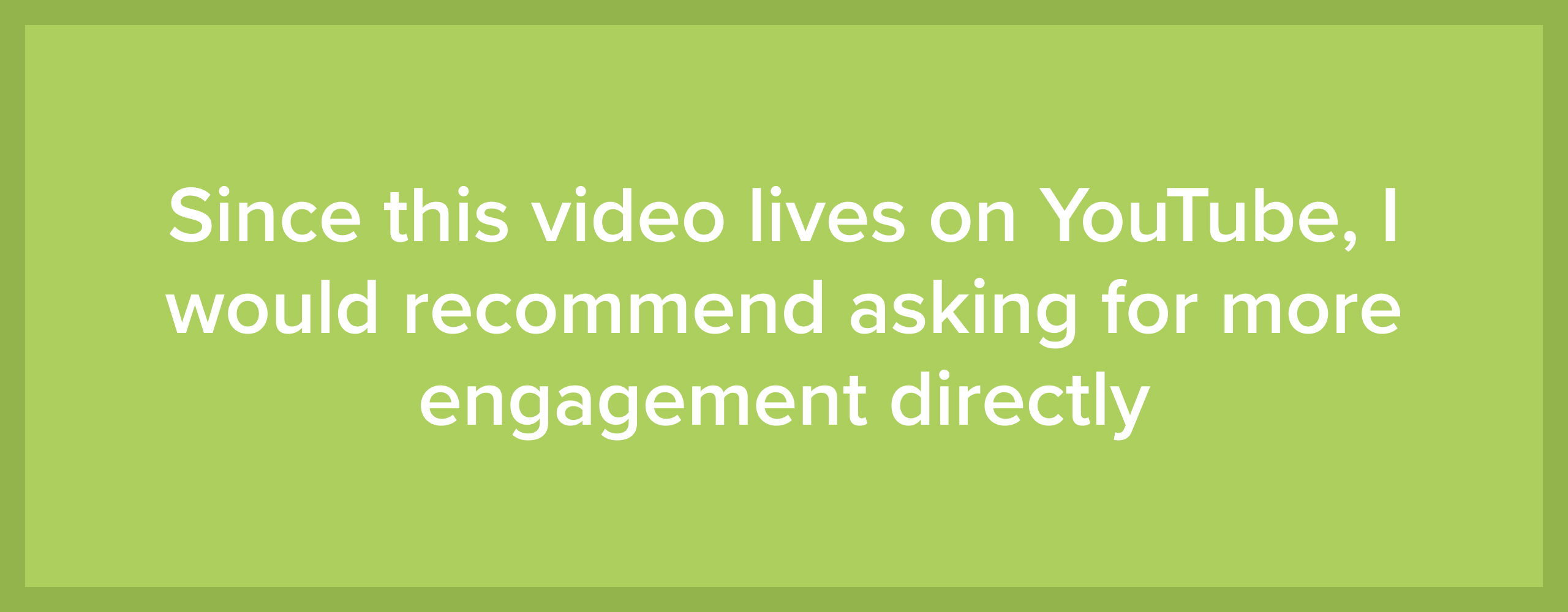
Finally, at the end of the video, we have the call to action. The video does a good job of breaking down who could be contacted with questions about leather. Since this video lives on YouTube, I would recommend asking for more engagement directly, meaning asking for comments on the video and urging viewers to like and subscribe to the channel for more tips like this.
Does it answer the question our viewers are actually asking?
This video does a great job answering the initial question and thinking of additional questions that the viewer might have while watching the video. The best example of this is introducing the different types of leather cleaners and where you can find them.
Video talent evaluation
Another element you’ll be assessing is the performance of the on-camera talent. If the person “starring” in your video is not believable, likable, and trustworthy, then your audience will not be able to connect with that person, thus leaving an unfavorable impression of your business.
I know this sounds subjective, but it's important.
One of the questions you may be asking yourself is, how does the talent reflect the performance of the videographer? The videographer is responsible for prepping and coaching the subject matter experts within your company to give their best performance on camera every time they step on the set.
On-camera talent is often your sales and service teams. They are the teams on the front lines, interacting with customers on a daily basis. They already have public speaking skills, which makes them a natural fit in front of a camera. They’ll just need some practice in talking to a lens instead of a person.
Does the talent come off as unbiased and likable?
Overall, the content is unbiased and thorough, but to answer the last question — does the talent come across as likable? The performance isn’t offensive, but does that automatically make this performer likable?
When I’m watching this video, I feel pretty neutral about the presenter. I don’t dislike him, but I also don’t necessarily have a particular affinity toward him.
What would change that for me? If Nick had more clearly articulated that he knows and understands the feelings at stake when it comes to improper care of leather furniture, I would have had a stronger emotional connection to the content.
Empathy and connection go a long way toward winning over the audience. If they get the feeling that the talent truly sees and understands them, they are more likely to judge the performance as likable.
Does the on-camera talent convey a feeling?
While I’m watching the video, I feel a sense of assuredness — I’m assured of the fact that Nick could help me solve this problem of caring for leather furniture.
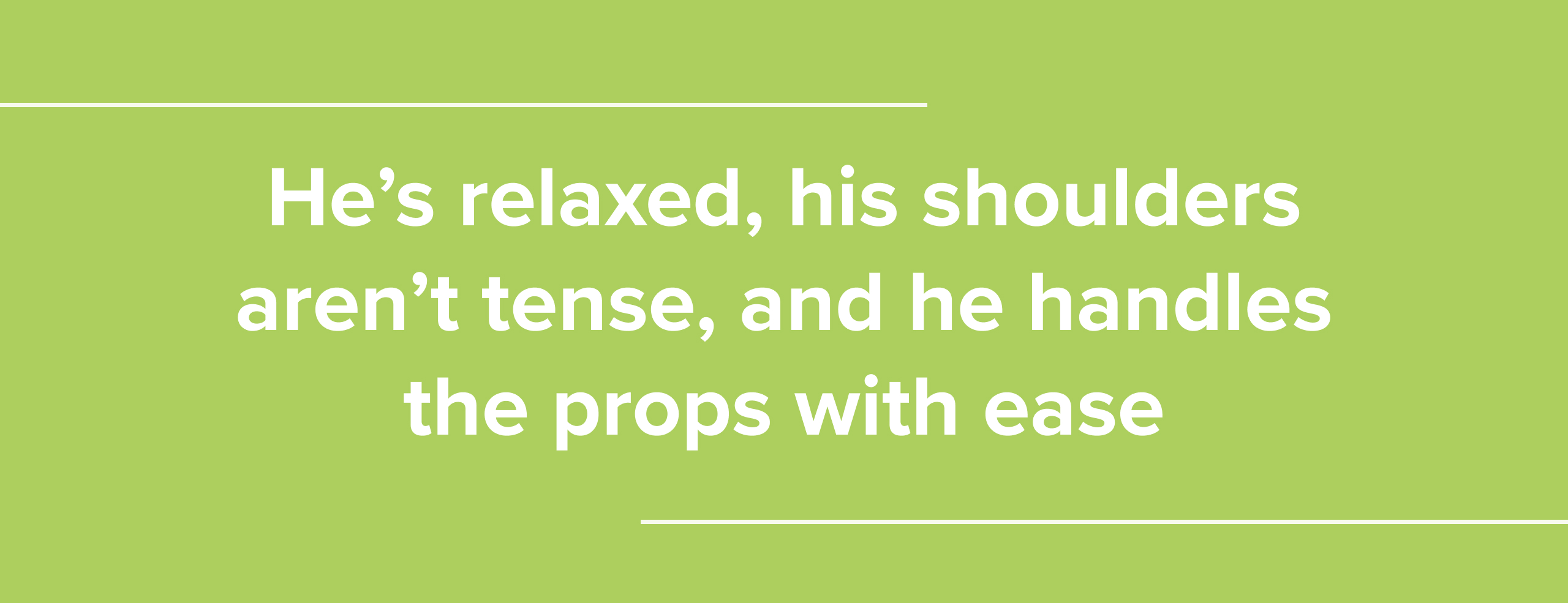
What helps me feel this way about Nick is his body language: he’s relaxed, his shoulders aren’t tense, and he handles the props with ease — he doesn’t fumble around with them. His voice is also steady, and he’s explaining this topic in great detail — it’s like he’s thought of every angle of this topic.
Does this come off as cheesy or forced?
Nick’s performance not appear to me as cheesy or forced. His posture is relaxed and it feels like he’s in control of what he’s saying. And while he’s not reading directly from a script, the video feels succinct and the speech has a clear point.
Using props could come off as cheesy, but in this video, the props help demonstrate expertise and feel appropriate. They assist the performance rather than distract from it.
Are you addressing a real concern?
This is critical. Our goal with every video is to answer a question, conquer a challenge, and/or put at ease concerns around a topic our viewers have. They’re looking to us to guide them, and if we aren’t addressing concerns they actually have, we’re not going to be relevant or grab attention.
Does this video address a real concern? Think back to pre-production and why you chose this topic. It was prioritized because your team identified the need to address this because they’ve heard it so many times while talking to customers.
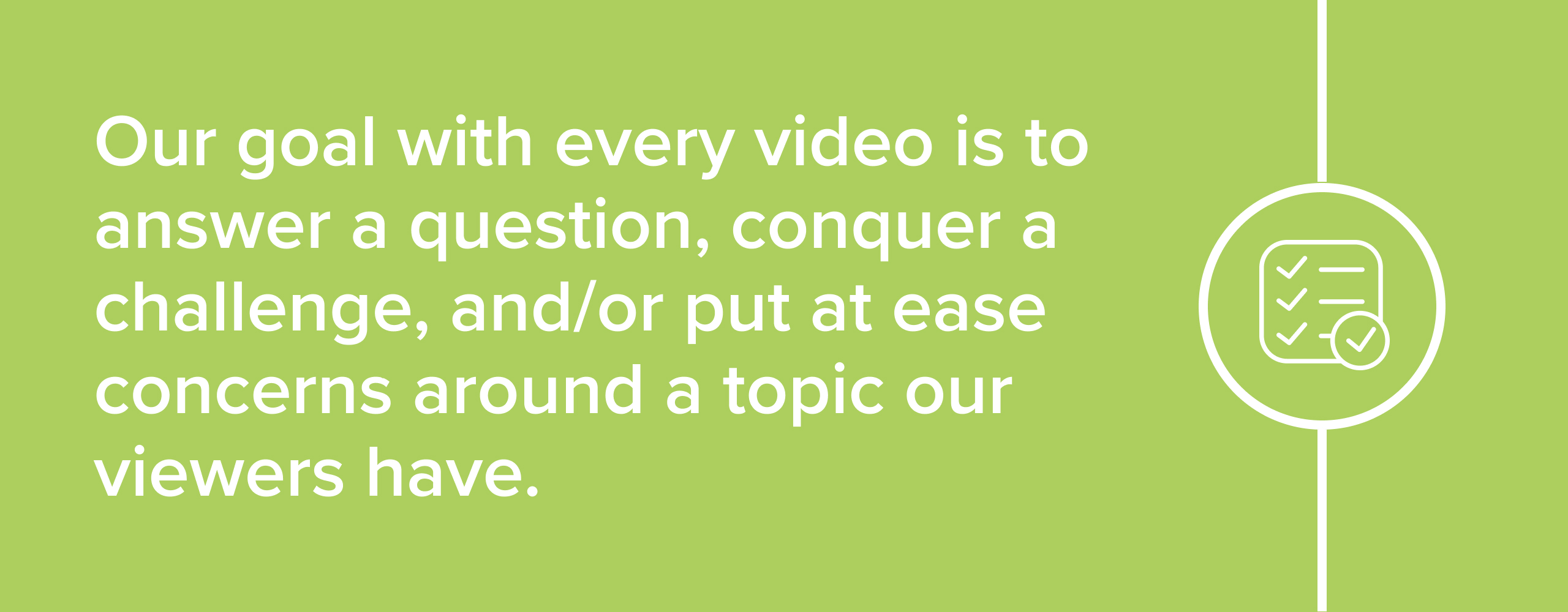
If the video follows the parameters established in pre-production with your team, you have addressed a real concern.
Are you coming from a place of trust and authority?
How do you build trust and establish authority at the same time? In this example, Nick shares with the audience that he’s been working for Furniture Fair for 17 years. If you hear that someone has a breadth of experience in any industry, that must mean that this person knows a thing or two about what they’re talking about.
In this case, you can trust that Nick knows his stuff about furniture. He’s also in a furniture showroom and there’s tons of leather furniture around him, further driving home the message.
He’s at ease with the demonstration of the leather types and cleaning the furniture. Confidence builds trust and establishes authority, and Nick is able to do both with his performance.
It’s also clear from the content of the video that he’s not trying to sell you anything. This is truly an educational video coming from a genuine place.
So to answer this question, this video checks the boxes as it is coming from a place of trust and authority.
Video production evaluation
The last category of evaluating a video is the quality of the actual production itself. Simply put, this is where we evaluate whether or not the video looks and sounds good.
This is the core competency a videographer comes into this role with, and likely, the feedback you give will be stylistic rather than foundational.
Let’s dive in using the evaluation checklist to grade the leather furniture maintenance video together.
How does it look?
Looking at this video, the color grading and the interview shots are up to the standards of quality production. They don’t distract from the content of the video, and they don’t look strange.
A combination of original and stock b-roll is used. (B-roll is the footage placed over the interview shot as the talent continues to talk.) It adds visual interest and helps further illustrate the point of the content of the video.
At timestamp 3:34, we can clearly see that there is stock footage being used here to illustrate the product cleaning the leather furniture.
For this segment, that b-roll is appropriate to the content of the video.
How does it sound?
The other component of evaluating production is sound. If a video doesn’t sound good, you’re likely to lose the viewer you’re trying to engage with the video. We can clearly hear what the talent is saying. The music doesn’t overpower the talent.
Is the music choice appropriate for the video?
I would recommend choosing different music. The first music track is almost like a lullaby. The second track is a better fit, and I would give the feedback to use that one throughout.
This is the last section of the Video Evaluation Checklist. Once you’ve checked the boxes in the criteria the video should be considered ready to publish.
The most important thing in the first few months of working with a videographer is getting them to publish. As long as the videos aren’t biased and they convey the information needed to completely answer the question the video is solving, then we should be encouraging the videographer to publish that video.
Evaluating your videographer’s overall performance
The other aspect is reviewing the videographer’s overall performance in the role itself — but how do you even begin to evaluate that?
If you’ve never been a videographer before, or even worked with one, what does an overall quality performance in the job look like? And how do you know your specialist is on track to have a great quarter?
Every company has a different answer to this question. So I’m going to refer to what we do at IMPACT for this section. Over the years, I’ve worked with a range of companies, from big corporations to a four-person social media ad agency.
None of these companies had a formal 1-1 process. IMPACT is the only company I’ve worked for where I feel connected to my manager and know what questions to ask her to help her help me in my role. This is why I’m recommending that companies follow this structure for meeting with videographers.
So how do we do it?
Bi-weekly 1-1 meetings
I meet with my manager for an hour every other week. Ahead of my meetings with her, I’m responsible for answering the following questions:
- What’s on your mind?
- Any potential issues on the horizon?
- What have you been focused on over the last two weeks?
- What are the top two things you need to accomplish over the next two weeks?
You might be surprised at how general these questions are, but what they do is give me the opportunity to open up and explain my experience in a thoughtful way.
If you’re working with a business coach, the last two questions can be focused on the work you need to do to hit 100% on your company priorities for the quarter, or they can be based on specific metrics the videographer would like to improve and score better on ahead of their next performance review.
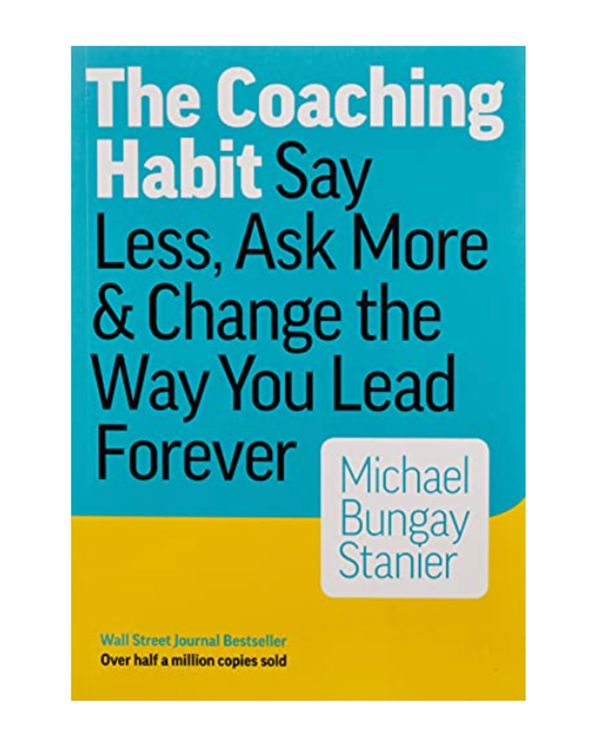
How do you respond to some of the answers that might come from the questions? Well, the first piece of homework to read as a manager of these specialists is The Coaching Habit by Michael Bungay Stanier. This book will help you frame your discussions around questions with your specialists to help them self-discover how to solve their own problems.
Quarterly evaluations
At IMPACT, everyone on our team gets evaluated quarterly. This evaluation helps us set personal priorities for the next quarter. For the areas you should be reviewing, I created the videographer performance evaluation template. It covers four categories of roles and responsibilities:
- Desired results are an accumulation of the end product of the tasks. For example, one of the desired results for a videographer would be publishing six to nine videos each month of the quarter. This is a tangible result that is easy to measure and is one of the basic duties of the videographer position.
- Functional accountabilities are the key accountabilities of this functional role. These three to five key accountabilities are what this functional role owns.
- Key competencies are the most important abilities/skills a person should have to be successful in this functional role. These are the skills needed for a videographer to not only make the videos, but also to manage their workload and be the most trusted voice for video inside of a company.
- Core values define the company's culture and personality. Team members that share these core values can be trusted to make good decisions that align with the company vision. This section of the template is left blank because every company has different core values.
Scoring each of these sections will allow you as the manager to determine where this specialist falls in terms of their performance. The goal is to get as many "A-players" on your team as possible.
Conducting evaluations quarterly will not only give you insight into the specialists’ strengths and weaknesses, but it will also allow you as the manager to assess where you can best assist this person as they continue to grow and build the role for your company.
What does the future of video look like for my company?
You’re taking a huge step to improve your marketing and sales team capabilities by adding videographer.
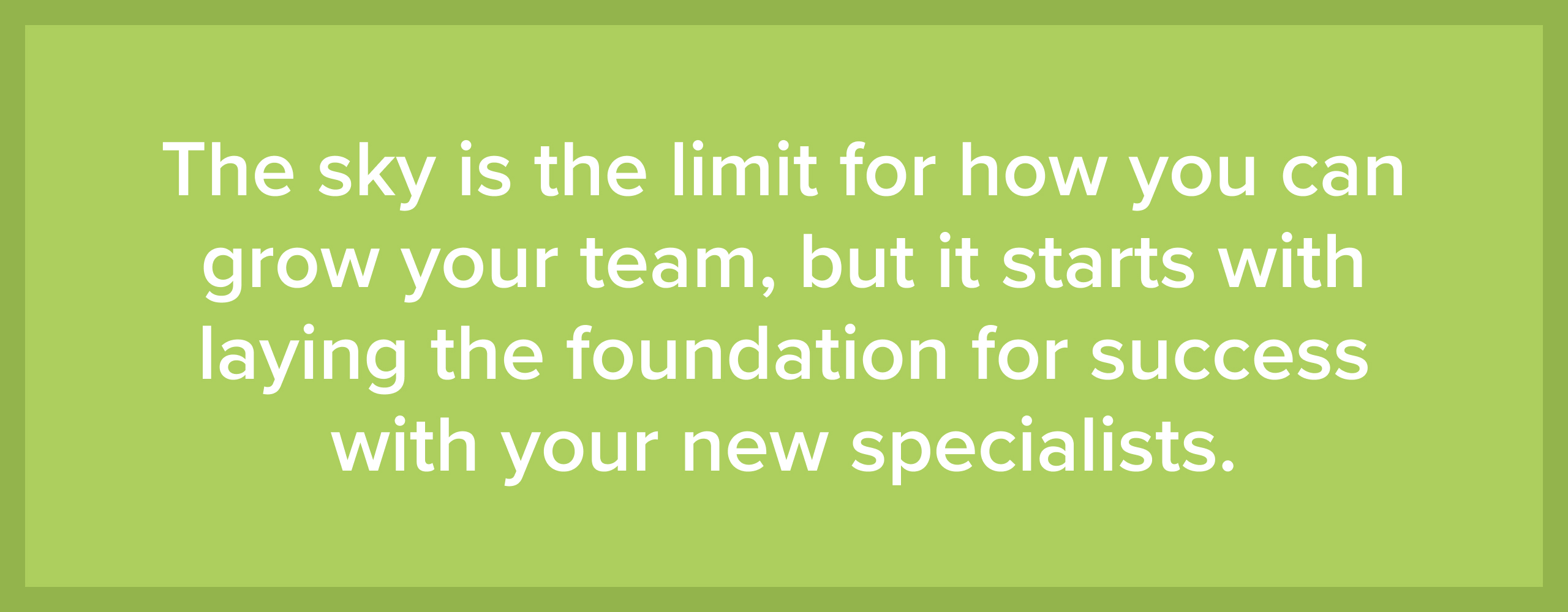
And while you’re excited about this, you started reading this article because you were nervous: This is a position you’ve likely never managed before.
Thinking big picture! The sky is the limit for how you can grow your team, but it starts with laying the foundation for success with your new specialists.
Have consistent conversations with this person about where they see themselves in the future. How can your company consistently be the place they want to stay? What can you do to help them realize what is possible with your company?
I’d recommend reading Radical Candor by Kim Scott (or if you’re a podcast person, there’s a Radical Candor podcast). The principles in this book will help you dive deeper into leading your team down the right path, and give you tools to effectively give feedback to them as you have these conversations.
In terms of video knowledge, you can check out this course: Fundamentals of Videography
There’s a lot that’s about to change in your department, and that’s a good thing.
With your videographer in place, you’re ready to change the landscape of your industry. You can become the most trusted voice the world turns to when it comes to doing what you do best.
You got this :)


Order Your Copy of Marcus Sheridan's New Book — Endless Customers!